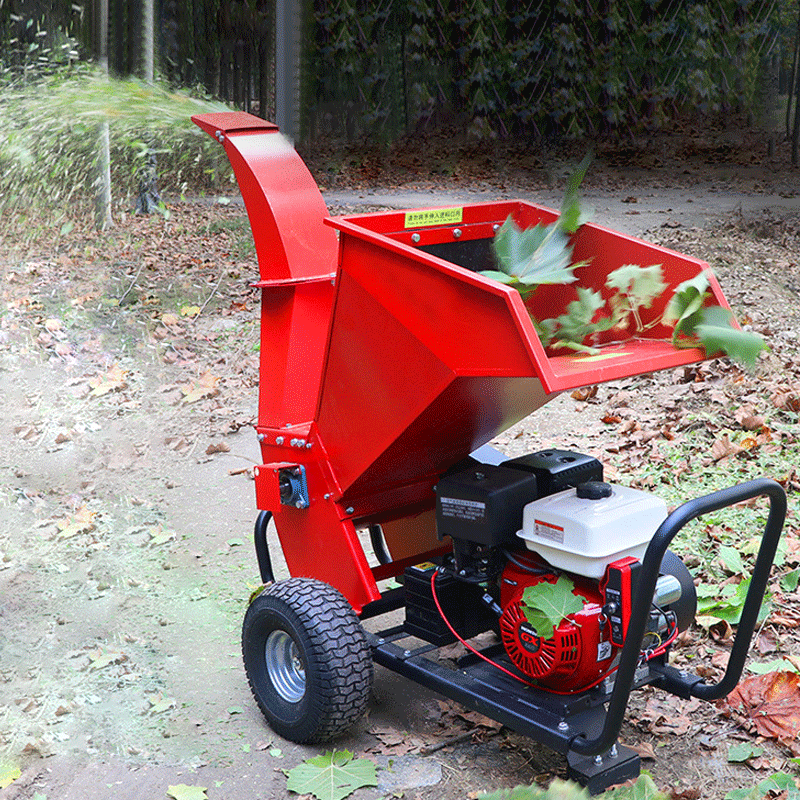When you think of a wood chipper, the immediate image is likely one of landscaping crews feeding tree branches into a loud machine, producing a pile of wood chips for mulch. While this is its primary and most valuable function, limiting your wood chipper to this single role means missing out on a world of productivity and profit.
Modern wood chippers, especially robust models like our KESEN industrial chippers, are versatile powerhouses capable of processing a wide range of organic and even some non-organic materials. This article will explore ten innovative and practical applications for your wood chipper that go far beyond simple branch disposal. Discover how to maximize your return on investment, unlock new revenue streams, and solve unique problems with this incredibly adaptable machine.

(Section 1: Enhancing Agricultural and Livestock Operations)
Creating High-Quality Bedding for Livestock:
Wood chips from clean, untreated wood are an excellent and absorbent bedding material for horses, cattle, chickens, and other livestock. They provide a comfortable, dry surface that insulates against cold and helps control odors. By chipping your own timber or pallets, you can produce affordable, sustainable bedding on demand, significantly reducing your farm's operating costs.
Producing Nutrient-Rich Compost Accelerator:
Wood chips are a carbon-rich "brown" material, essential for balanced composting. By chipping garden waste, small branches, and even straw, you create a perfect ingredient to mix with nitrogen-rich "green" materials like food scraps and manure. The increased surface area of the chips accelerates decomposition, turning your waste into valuable, black gold for your fields and gardens much faster.
Manufacturing Erosion Control Mulch:
For farms on sloped land or near watercourses, erosion is a constant concern. Coarse wood chips can be used to create effective erosion control blankets. They protect the soil from the impact of rain and wind, allowing vegetation to re-establish. This is a cost-effective, natural solution for managing soil health and protecting water quality.
(Section 2: Creative Landscaping and Material Production)
Crafting Pathways and Walkways:
Move beyond basic mulch beds. Use your wood chipper to create a consistent, attractive material for garden pathways, nature trails, or playground surfaces. Wood chip paths are permeable, reducing water runoff, and provide a soft, natural-looking surface that is pleasant to walk on. Different tree species can even produce chips of varying colors for aesthetic appeal
Generating Biomass for Heating:
In an era of rising energy costs, wood chips are a recognized biomass fuel for specialized heating systems. While not all chippers are designed for fuel-grade chips, industrial models can process dry, clean wood into a uniform size suitable for biomass boilers. This turns waste wood into a free or low-cost source of heat for greenhouses, workshops, or even larger facilities.
Preparing Substrate for Mushroom Cultivation:
Certain mushrooms, notably gourmet varieties like Shiitake and Oyster mushrooms, are cultivated on hardwood substrates. A wood chipper is the perfect tool to create the ideal-sized wood chips for mushroom logs or bulk growing bags. This opens up a niche but potentially lucrative agricultural side business.
(Section 3: Practical Problem-Solving and Niche Applications)
Efficient Pallet and Construction Waste Disposal:
Disposing of broken pallets and clean, untreated construction lumber (like 2x4 cut-offs) can be costly. Instead of paying for dumpsters, feed this wood through your chipper. The resulting chips can be used for bedding, biomass, or as a base material for temporary roads on construction sites, saving you money on both disposal and material purchase.
Managing Storm and Natural Debris:
After a storm, properties can be littered with fallen limbs, shrubs, and other organic debris. A wood chipper is the fastest way to clean up and reduce the volume of this waste by over 10:1. Instead of burning or hauling away massive piles, you can quickly transform them into a useful product.
Creating Playground Safety Surfaces:
Engineered Wood Fiber (EWF) is a safety material certified for use in playgrounds. It is essentially uniformly sized wood chips that provide a cushioned surface to reduce injuries from falls. With the right machine and screening equipment, you can produce your own EWF for community projects or commercial playground installations.
Animal Habitat and Enrichment:
Zoos, wildlife reserves, and even large private estates use wood chips to create naturalistic and enriching environments for animals. From bedding in enclosures to creating foraging opportunities, chipped wood can play a vital role in animal welfare and habitat management.
(Conclusion: Rethink Your Resource)
Your wood chipper is not just a disposal unit; it's a material transformation engine. By looking at "waste" wood and organic debris as a potential resource, you unlock a new level of efficiency and creativity. Whether you're a farmer, a landscaper, a municipality, or a savvy DIYer, these innovative applications demonstrate that the humble wood chipper is one of the most versatile and valuable tools you can own. It’s time to see your wood chipper not for what it removes, but for what it can create.
 Hot News
Hot News2024-12-26
2024-12-18
2024-10-11
2024-09-18
2024-09-09
2024-07-25